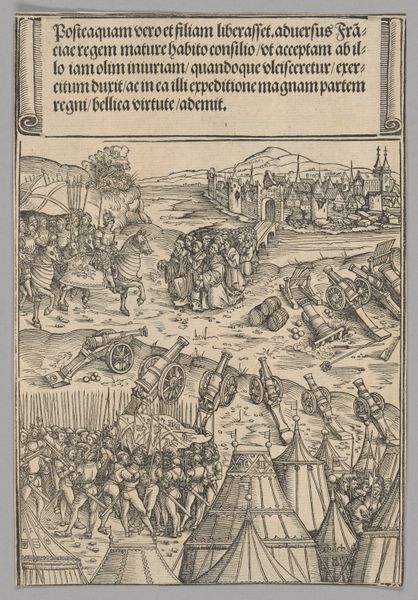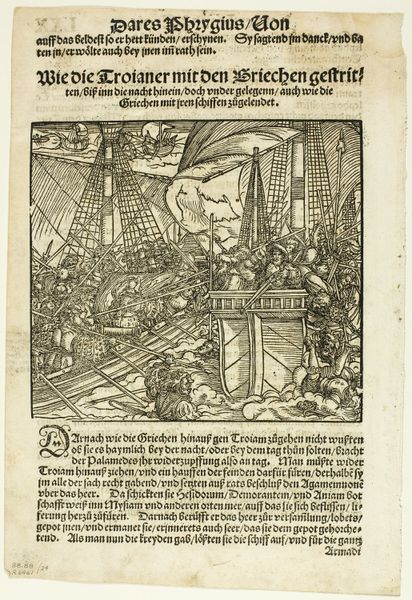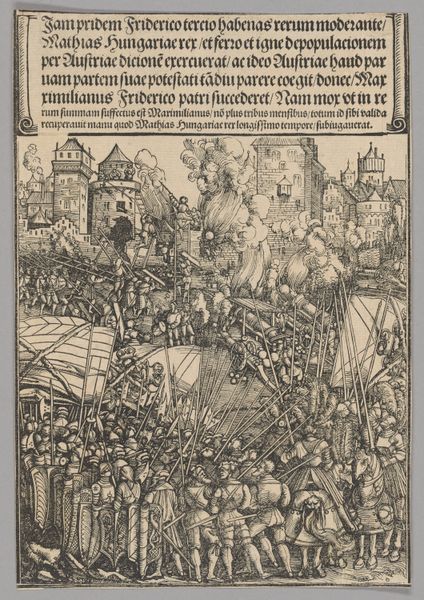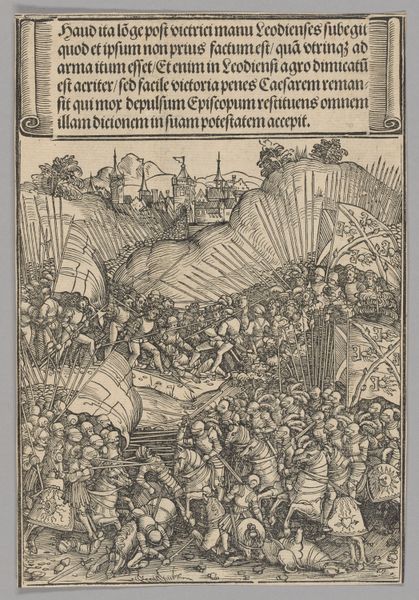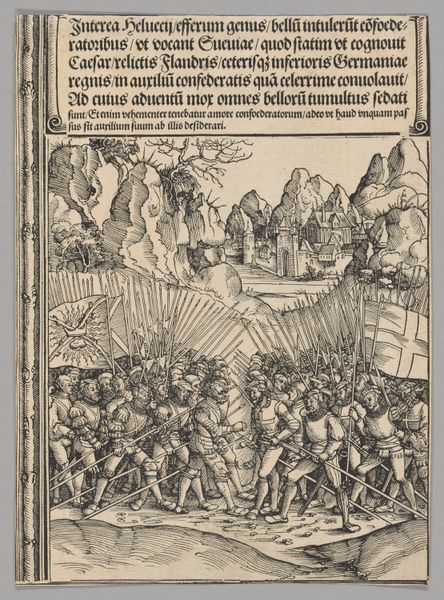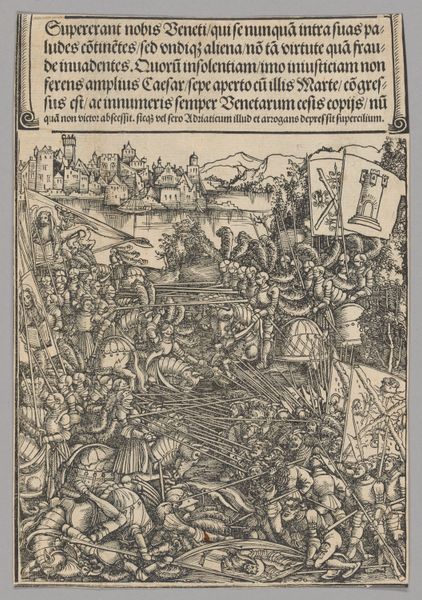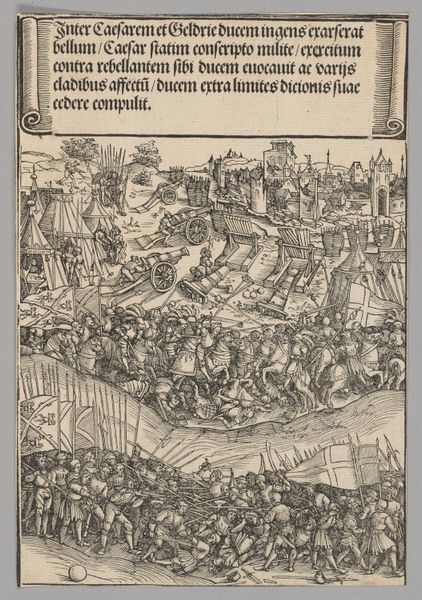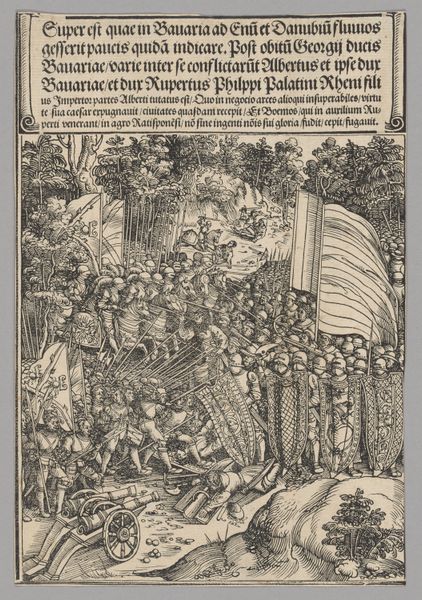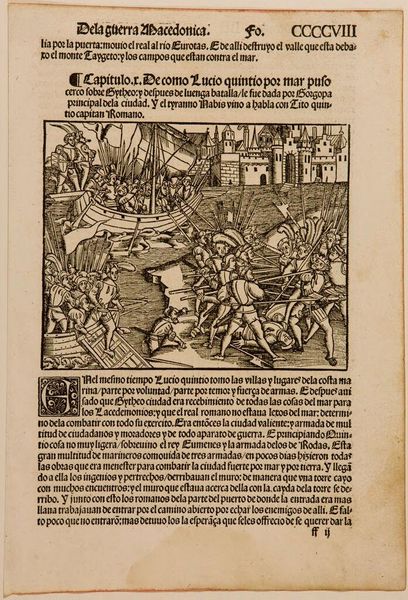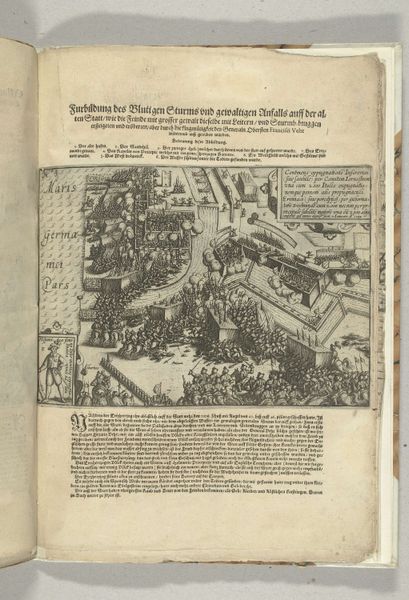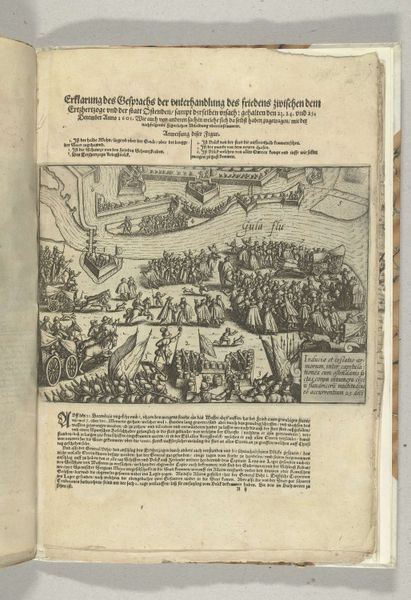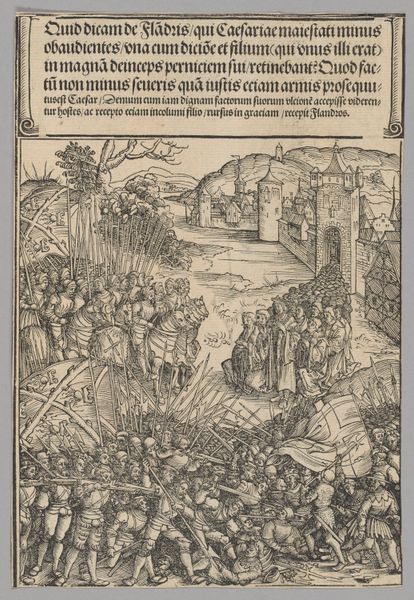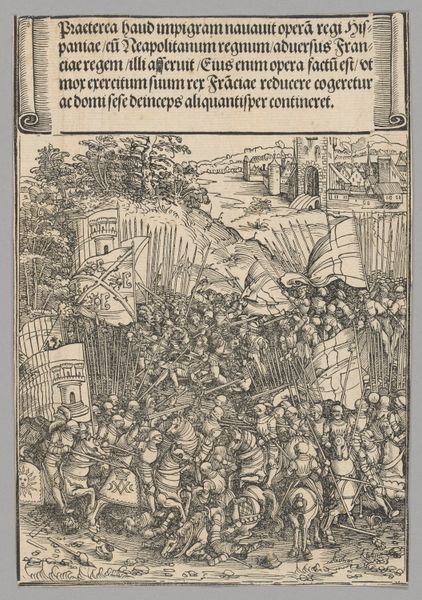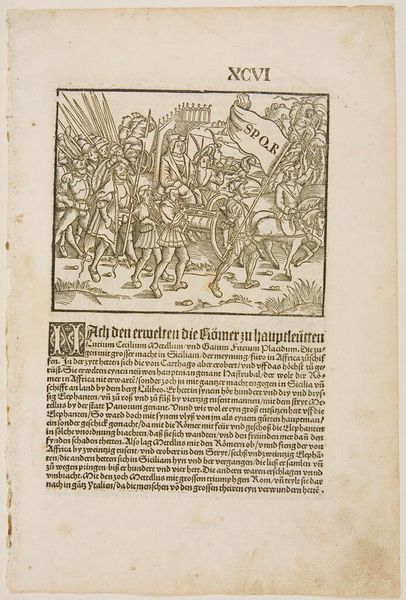
Titelpagina van het pamflet: Toets ofte Proef-steen, Aengaende het Placcaet van de Doorluchtighe Isabella Clara Eugenia, Infante van Spangien (...) onlancx wt ghegaen : of de Coninck Philips (...) soo goedertieren (...) met de Nederlanden (...) gehandelt heeft, als sy daer in verhaelt, 1599 1599
0:00
0:00
graphic-art, print, paper, woodcut, engraving
#
portrait
#
graphic-art
# print
#
paper
#
woodcut
#
northern-renaissance
#
engraving
Dimensions: height 184 mm, width 140 mm
Copyright: Rijks Museum: Open Domain
This anonymous title page from 1599, now in the Rijksmuseum, confronts us with potent symbols of power and conflict. At its heart is the motif of judgment. Note the scales, and the kneeling figure being 'tested', whilst powerful figures observe. This echoes the ancient concept of 'psychostasia,' the weighing of souls, seen in Egyptian and Greek art. Here, it represents the judgment of King Philip's actions. The visual language extends beyond mere depiction, engaging our subconscious with archetypal anxieties about justice and retribution. Consider the burning city in the background, reminiscent of the eternal flames of hell. This imagery transcends time, appearing across cultures as a signifier of divine punishment. It touches a primal fear, a collective memory of destruction and moral reckoning. This pamphlet cover is not just an historical document; it’s a complex web of symbols, resonating with echoes of the past.
Comments
No comments
Be the first to comment and join the conversation on the ultimate creative platform.
